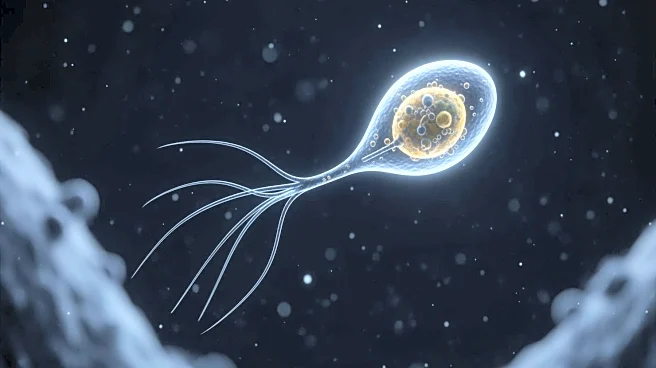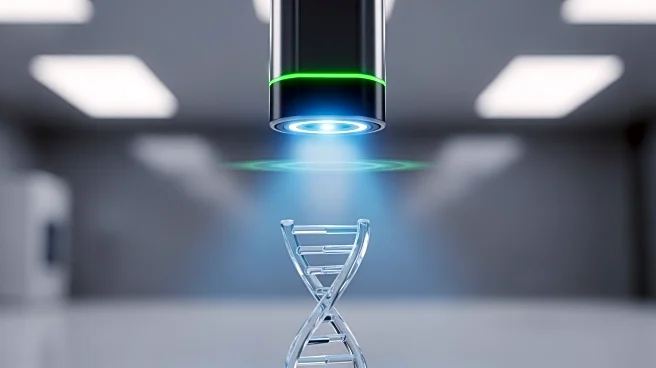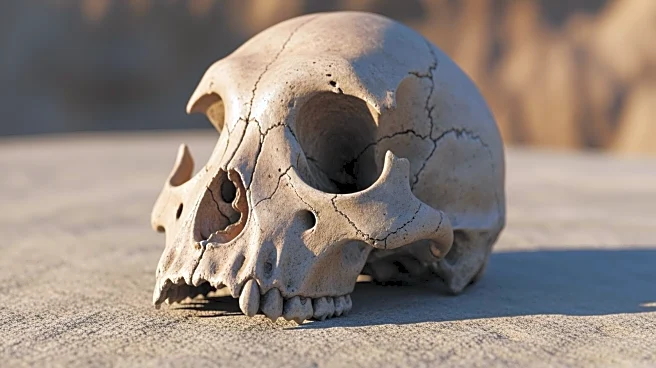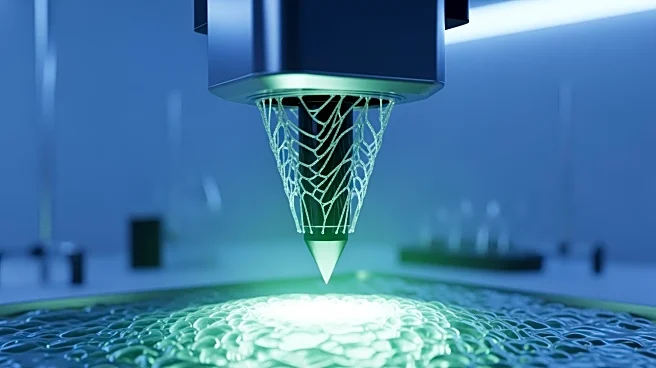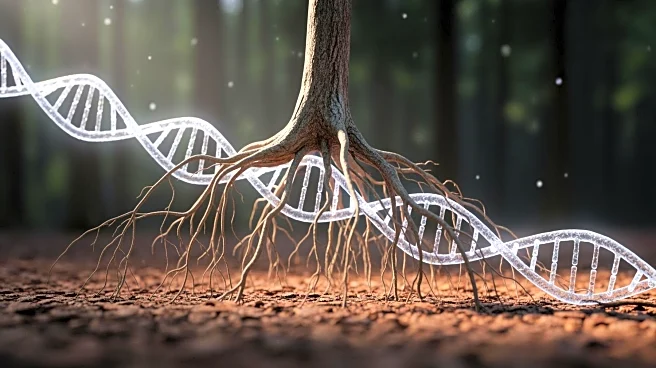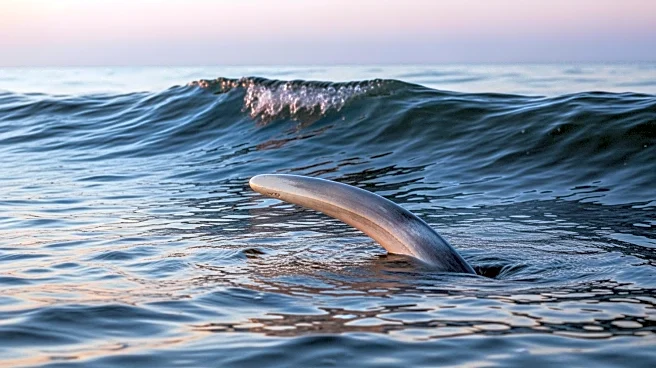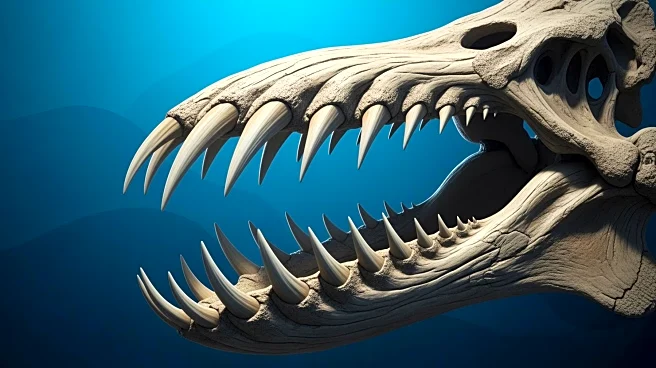What's Happening?
A recent study has traced the evolutionary origins of sperm back to single-celled ancestors, predating multicellular animals by over a billion years. Researchers analyzed DNA and proteins from various
animal species, discovering that the molecular toolkit for sperm existed in single-celled organisms long before the emergence of multicellular life. This toolkit, consisting of around 300 gene families, formed the core genome of the last universal common sperm ancestor. The study suggests that the machinery for sperm, including its flagellum, evolved in unicellular ancestors and was later adapted for reproduction in multicellular organisms.
Why It's Important?
Understanding the evolutionary history of sperm provides insights into the fundamental processes of reproduction and the development of life on Earth. The findings highlight the continuity of biological mechanisms across vast evolutionary timescales, demonstrating how complex reproductive systems evolved from simpler unicellular structures. This research could have implications for fields such as evolutionary biology, genetics, and reproductive health, offering a deeper understanding of the origins and diversification of life. It underscores the importance of studying ancient biological systems to inform modern scientific inquiries.
Beyond the Headlines
The study's findings challenge the notion that complex reproductive systems are solely a product of multicellular evolution. By revealing the ancient origins of sperm, the research emphasizes the role of unicellular organisms in shaping the biological landscape. This perspective may influence future studies on the evolution of other reproductive mechanisms and contribute to a broader understanding of life's history. Additionally, the conservation of sperm's tail structure across diverse species suggests a fundamental role in reproduction, highlighting the efficiency and adaptability of evolutionary processes.
